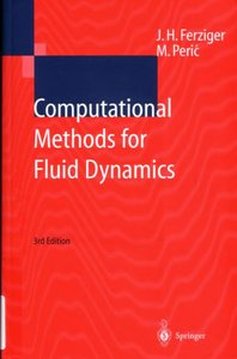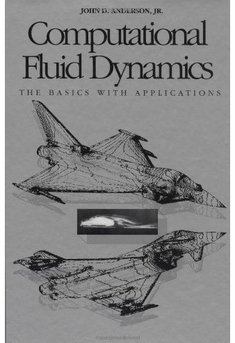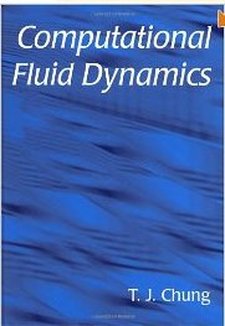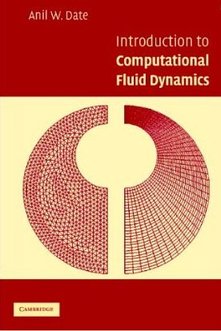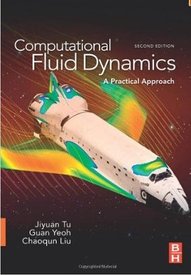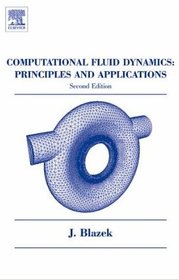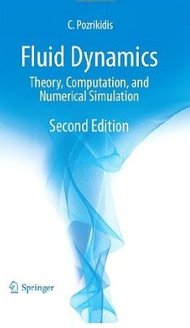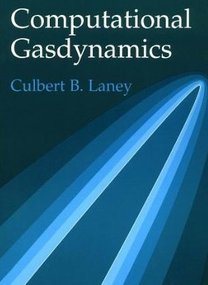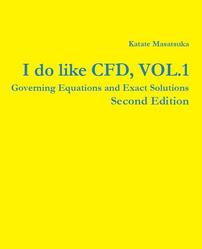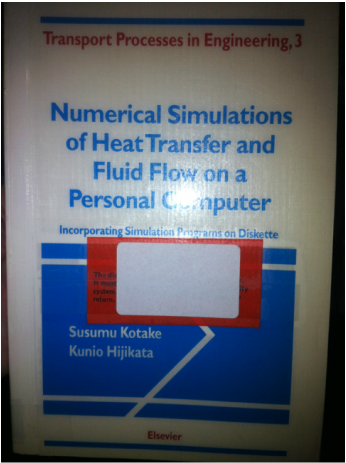CFD Book Reviews
Book Number 1:
|
I would like to thank the authors for there marvelous peace of work. I predict that in the coming future with the introduction of future editions, this book will become an important reference in finite volume methods which will be a must to read for every student. The student can read through it but with difficulty if he had no back ground in numerical analysis. So my advice is that the student should have knowledge in numerical analysis to read this book. If the reader has in mind to work on compressible codes or problems this book will not be helpful because its main focus is on incompressible fluids. If the reader has future plans to work on CFD software this book will be very beneficial for him. Self study of this book will take the reader about (6 to 9) months to get a full understanding of the book. I presume with academic assistance that will cut down the period from (6 to 4) months. The book will be help full for the reader to work on a CFD code, but does not have the required material to write a CFD code. The problem is that the after reading the book , it would be hard for the reader to formulate problems related to combustion and reactive flows. Chapter 1, Chapter 2, Chapter 4, Chapter 5, are excellently explained with very easy examples to go through. Chapter 3 is well written but it's to dense in theory especially when different turbulence models are discussed which gets boring at some point. Chapter 6: incompressible fluids simulations need pressure correction during the calculation, comparing this chapter to other CFD books its best described in my point of view, its well organized and written but the theory is hard to understand, there are two solved problems but don't seem simple to understand. Chapter 7: it's organized in layout and has a good 2d solved example, but the material in the chapter is just introductory and the reader should cover his thirst for a better understanding from a numerical analysis text book. It's not enough for the reader to get a good grip of things.Chapter 8: has been given a very small part of the book while i think it should be given more attention, it would have been beneficial for the reader if the Runge Kutta example had been provided.
|
Chapter 9: the boundary conditions chapter hasn't been given enough talk, with no solved examples. Boundary conditions were covered in solved examples in chapters 4 ,5 ,6 and 11. Chapter 10: it's a short introductory chapter for error analysis. Simple error analysis use was discussed in chapter 4. Chapter 11: it's organized in layout and has a good 2d solved example, discretization of the linear and none linear terms for unstructured grid is introduced but not that easy to go through, but the material in the chapter is just introductory and the reader should cover his thirst for a better understanding from a Grid Generation text book. It's not enough for the reader to get a good grip of things. Chapter 12: Is well written but also dense in information, but not enough and detailed examples solved to be enough for the reader to formulate his combustion problem. Chapter 13 : Can be considered as a short introduction into radiative heat transfer. I hope this was helpful. Wish you best of luck. |
Book Number 2
|
The book is most referred to postgrad researchers having a strong background in mathematics and coding. This book is for researchers dealing with incompressible flows not sufficient for working with compressible flows especially for beginners. For people staring in the field , the reader is advised to have an accompanying book by Joel H. Ferziger on Numerical Methods for Engineering Applications. Chapter 1: very well written with the fundamental laws mentioned. Chapter 2: very well written with the description of different methods and conditions that have to be achieved by the selected numerical methods to validate its efficiency. Chapter 3: its well written but cant be counted as an introduction for a beginner, space discretization using finite difference method. Chapter 4: its well written but cant be counted as an introduction for a beginner, space discretization using finite Volume method.
Chapter 5: very well written it discusses the solution methods of linear Equation Systems with efficiency and pros and cons of each method. Chapter 6: its well written but cant be counted as an introduction for a beginner for the time discretization. Chapter 7: its the best and chapter for the solution of the Navier-Stokes I ever came across. Chapter 8:it's a brief introduction to dealing with complex geometries. Chapter 9: it is a brief summary, with several basic turbulence models covered. |
Chapter 10: it's a brief introduction a book on compressible fluid is better if the researcher is refered to. Chapter 11: it's a brief introduction on types of errors encountered when different numerical methods are used. Chapter 12: can be regard as an introduction to application side of things.
|
Book Number 3
|
The name John Anderson always rings a bell its excellently written simplified organized intended for engineers. The book is cheap in price. This book can perform the role of putting you in the field of computational fluid dynamics. You can self study this book without any external assistance. The book leads you to write the mathematical algorithm for a CFD code then you will have to rely on your skills to write the code in the language you excel in.
|
Book Number 4
|
Its a very well written book thanks to the author, finite difference, finite volume, finite element and spectral methods are covered. The book is rich with material related to finite difference method.The derivatives of the finite difference scheme are presented for a large selection of cases example forward differencing ,backward differencing, central differencing ....etc. Also finding a derivative for a two, three, four, five point... n point case. The derivation method of the derivatives is also presented. All are presented in an organized manner. The finite element method is also given its good share of description. Not that much emphasis on the finite volume though. The advantage of the book that it covers a large spectrum of applications.
|
Book Number 5
|
Firstly i would like to thank the author for this book, there are lots of books on computational fluid dynamics but this book has a special approach that differs from other authors. The book covers the finite difference and finite volume method. I wouldn't advice a beginner in the field to start from this reference due to its high level approach to the subject. The book tries to approach the subject from the application side of things, which would be beneficial for the reader if he was a mechanical engineer. Reading this book requires knowledge on fluid mechanics heat transfer, tensor calculus, vector analysis and linear algebra. The book provides two fortran77 codes in its appendices shown in an organized manner.
Chapter 1: Introduction, very well written. Chapter 2: 1D Heat Conduction, very well written with a 1D solid case solved. Chapter 3: 1D Conduction-Convection., Chapter 4: 2D Boundary Layers, Chapter 5: 2D Convection- Cartesian Grids, Chapter 6: 2D Convection-Complex Domains, very well written chapter Chapter 7: Phase Change, short chapter. Chapter 8: Numerical Grid Generation, it's a short chapter and not enough for an in depth understanding of grid generation, it's an introduction to an introduction. Chapter 9: Convergence Enhancement, its focuses on an important issue that will reduce the cost of a simulation. I hope that was helpful, good luck |
Book Number 6
|
Computational Fluid Dynamics for Engineers: 001
Klaus A. Hoffmann, Steve T. Chiang Computational Fluid Dynamics for Engineers: 002 Klaus A. Hoffmann, Steve T. Chiang I would recommend this book and its second volume if you want to write your own finite difference cfd code. its such a shame its not that wide spread in use and not easy to find, it wuld be really nice if a new edition is available, for a Phd student this is an excellent guide. |
Book Number 7
Book Number 8
Book Number 9
|
This book is intended for advanced students mostly postgraduates .
introductory material relating to Finite differnce schemes has been given covered in the last chapter with mild coverage of their stability study. If your looking for finite volume of finite elemnt methods then this is not the book. Stream functions have been given their good share. Different flow parameters have been covered which can help you understand their meaning when you work on CFD codes such as the Helicity. Mathematics students woudldnt find any problems with it. It covers some introductery material for grid generation in the first two chapters. Its to complex for an engineering student. |
Book Number 10
|
I would like to thank the author for this marvelous book.The first 184 pages are a detailed revision of basic principles, which is something not found in the majority of CFD books.
This books focus is on the finite difference and volume methods. This book is for researchers who work on compressible codes. Good Luck. |
Book Number 11
|
This is one of the very good books I came across in CFD, the author has also provided some links codes.
|
Book Number 12
Unless otherwise noted, all content on this site is @Copyright by Ahmed Al Makky 2012-2014 - http://cfd2012.com

